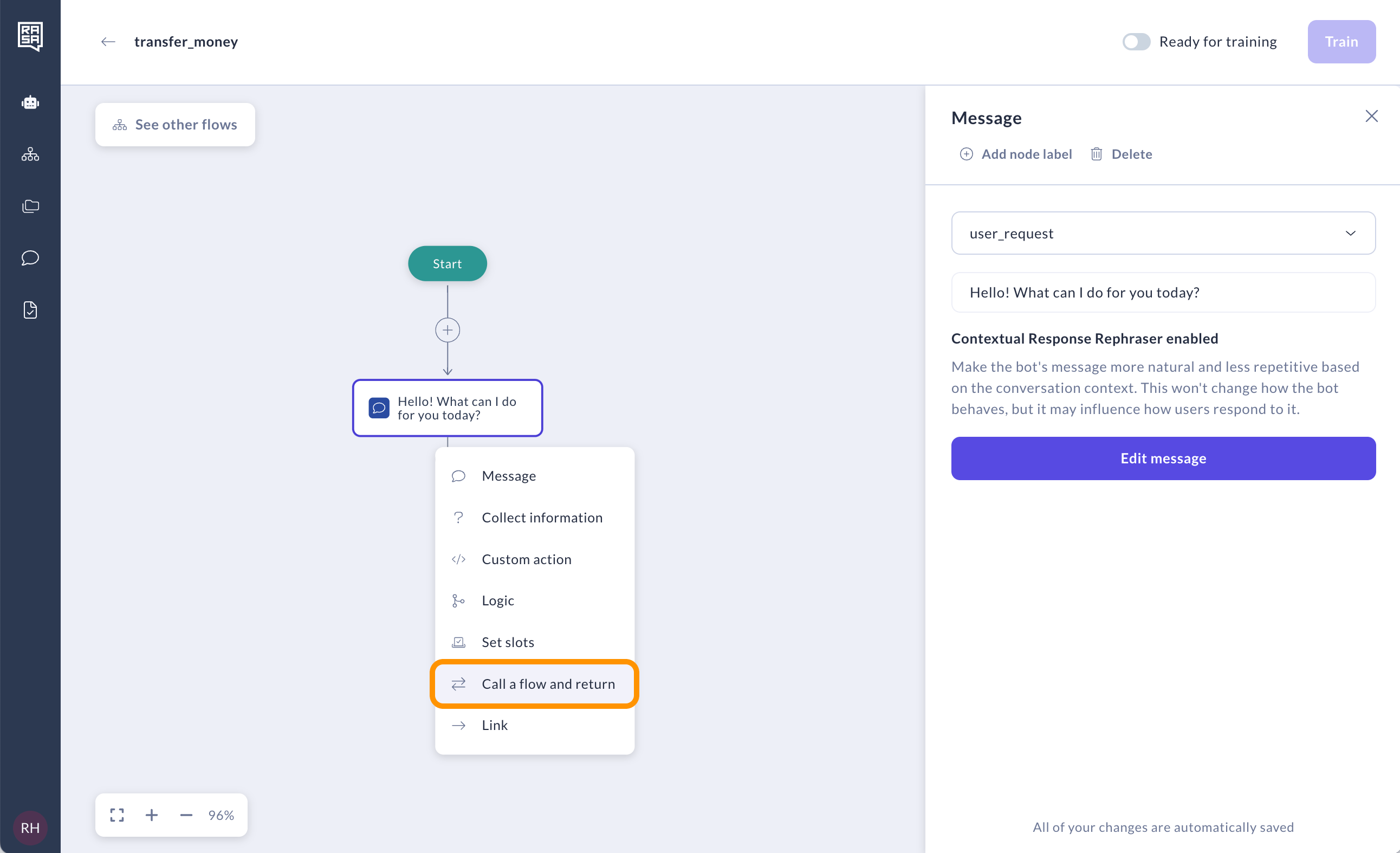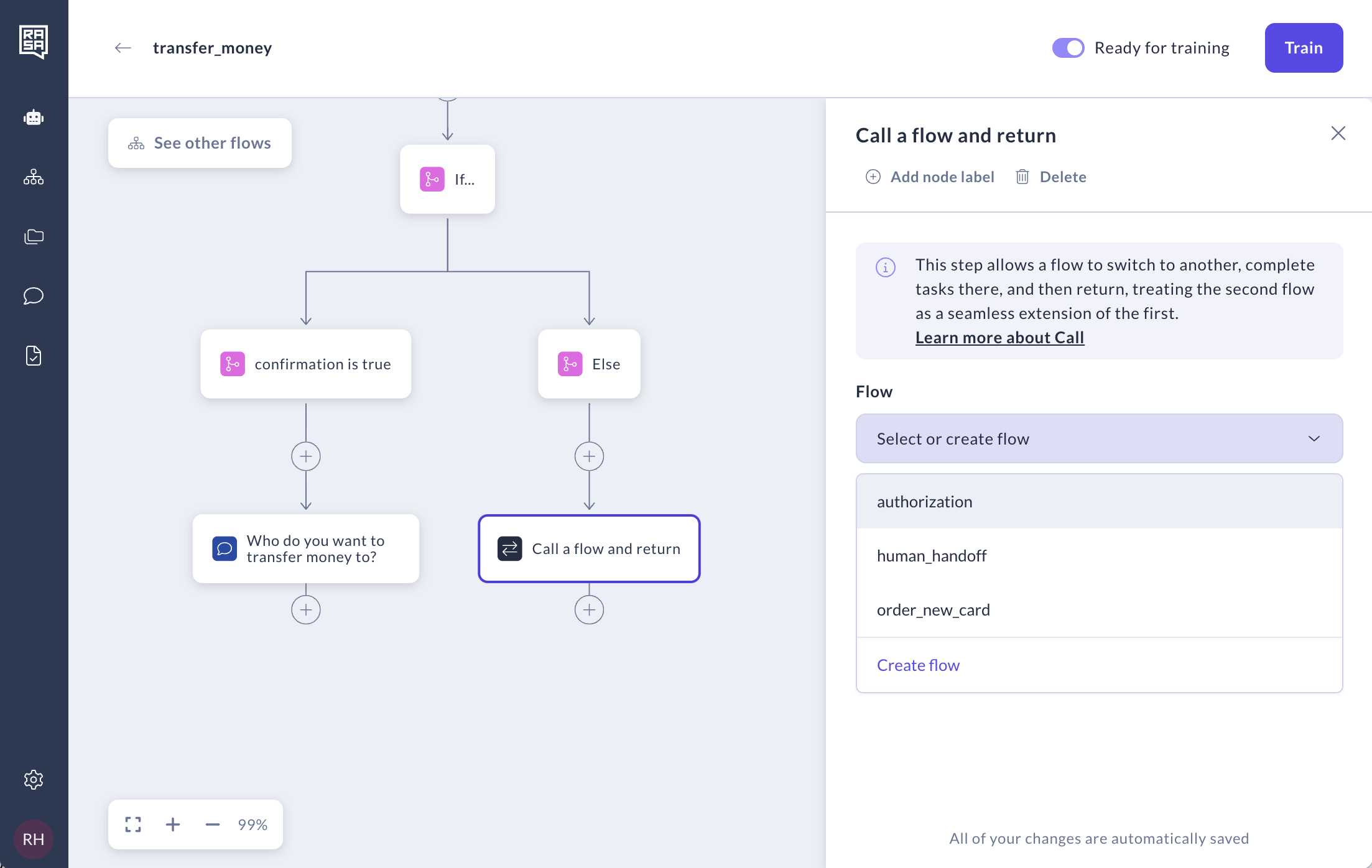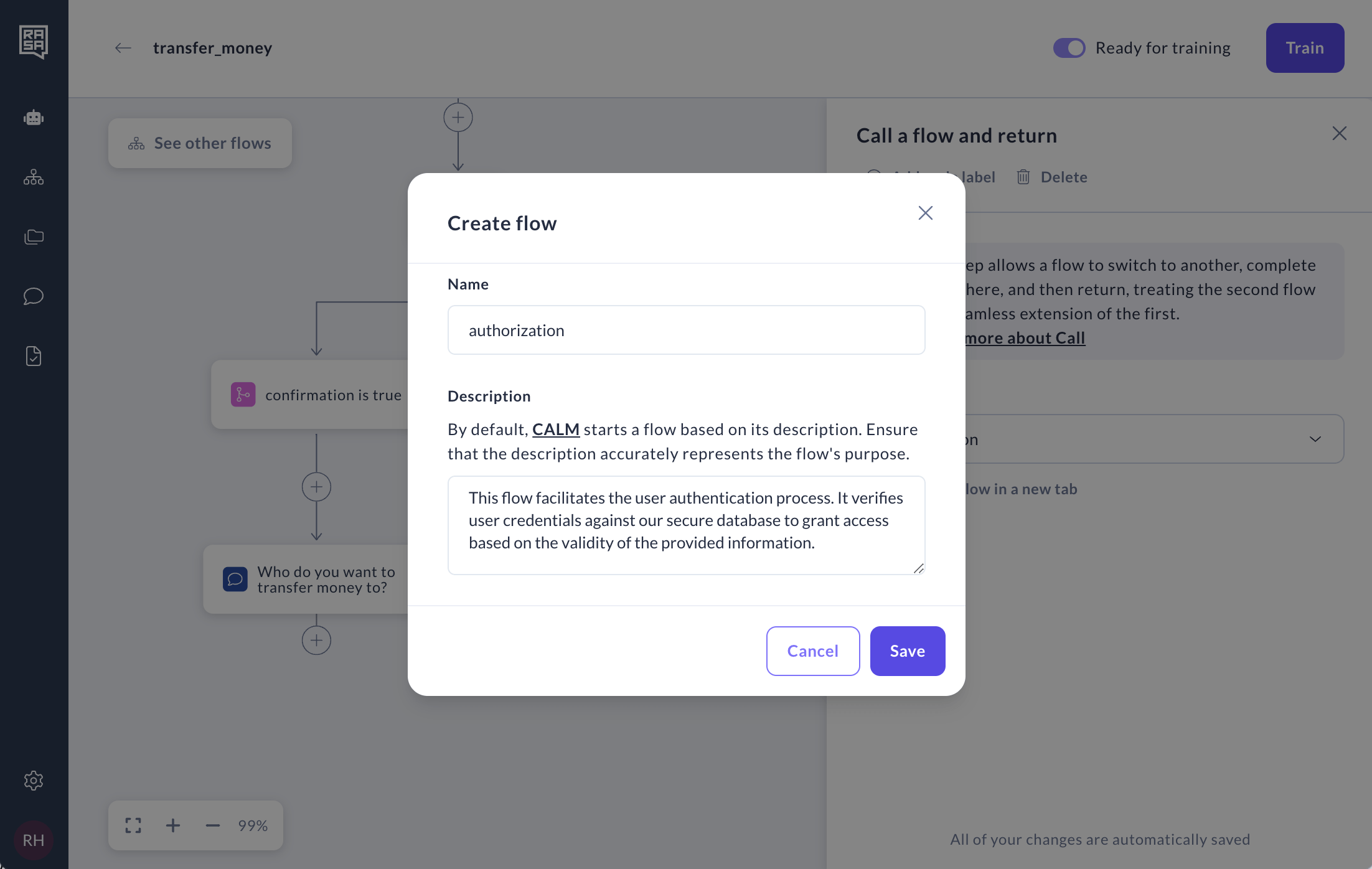Flow Builder — Call a flow and return
The "Call a flow and return" step allows a flow to switch to another, complete tasks there, and then return, treating the second flow as a seamless extension of the first.
Calling other flows helps split up and reuse functionality. It allows you to define a flow once and use it in multiple other flows. Long flows can be split into smaller ones, making them easier to understand and maintain.
How to create the Call step
Select the "Call a flow and return" step in the menu.

Select a flow you want to call or create a new one.

If you're creating a new one, fill in the details about the flow in the modal that opens.

Behavior of the step
The "Call a flow and return" step is designed to behave as if the child flow is part of the parent flow. Hence, the following behavior comes out of the box:
When the child flow ends, the conversation will return to the parent flow, and the next step will be executed.
Slots of the child flow can be filled upfront, even before the child flow starts. The Collect information steps in a child flow behave as if they were directly part of the parent flow.
Slots of the child flow can be corrected once they are filled, and the control is still within the child or the parent flow. Therefore, even after the child flow is complete, the slots can be corrected as long as the parent flow is still active.
Slots of the parent flow will not be reset when the child flow is activated. The child flow can access and modify slots of the parent flow.
Slots of a child flow will not be reset when control returns to the parent flow. Instead, they will be reset together with the slots of the parent flow once that ends.
Recommendation on using "Link" step vs. "Call a flow and return"
If the use case demands a flow to be started as a follow-up to another flow, then a "Link" step is better suited to accomplish the connection between the two flows. However, if a flow needs to behave as if it were part of another larger flow, and more steps need to be executed inside the larger flow after the child flow has completed, we recommend using the "Call a flow and return" step.
